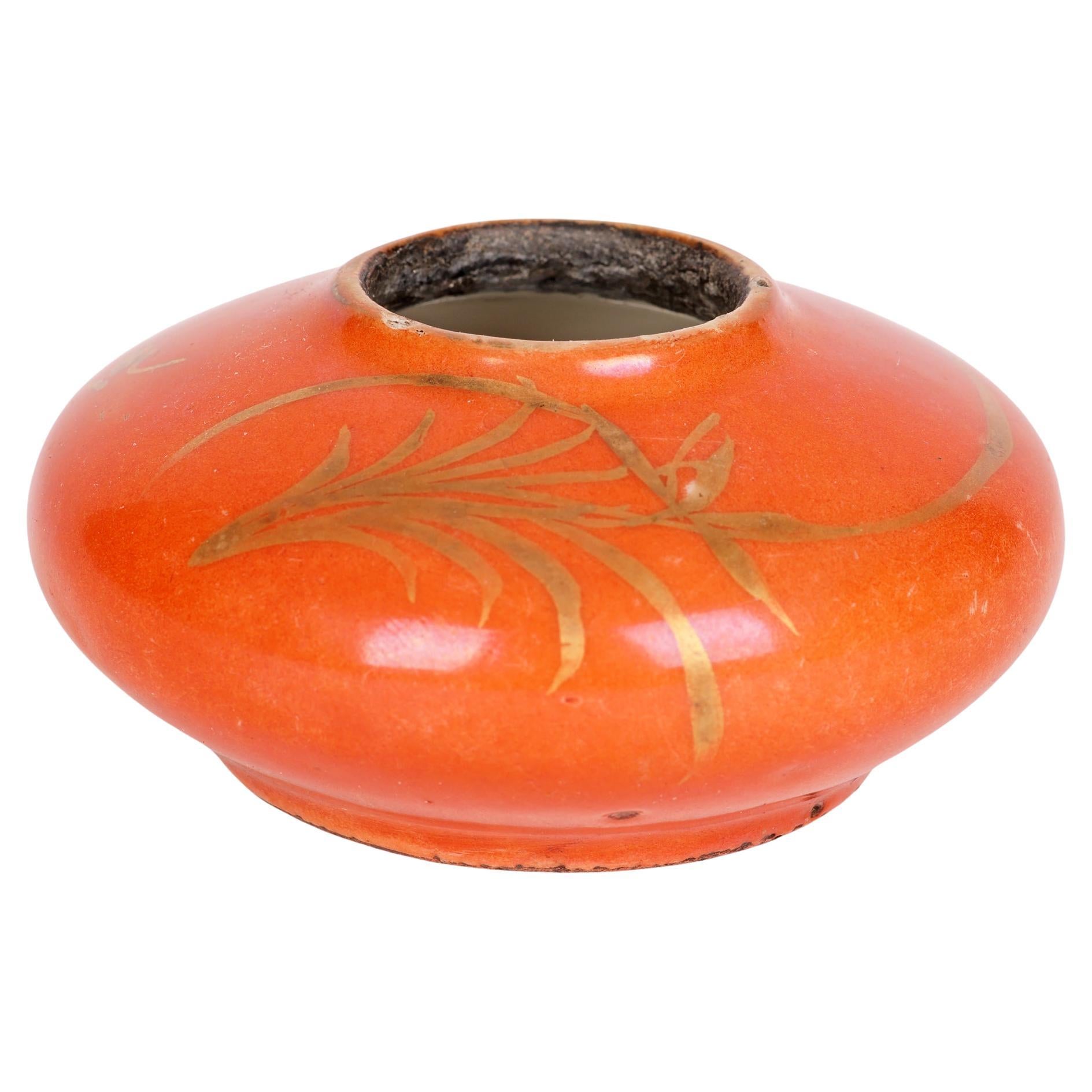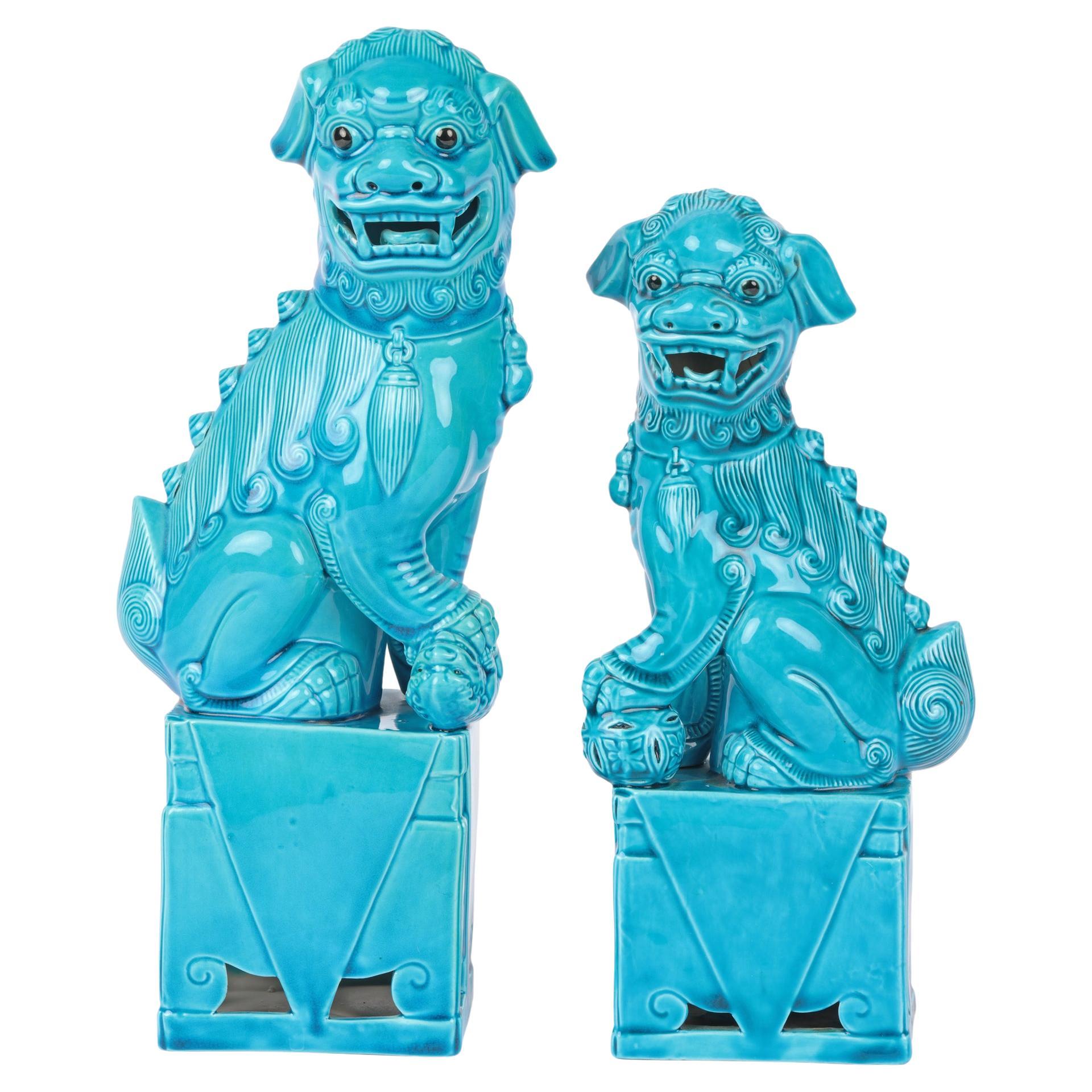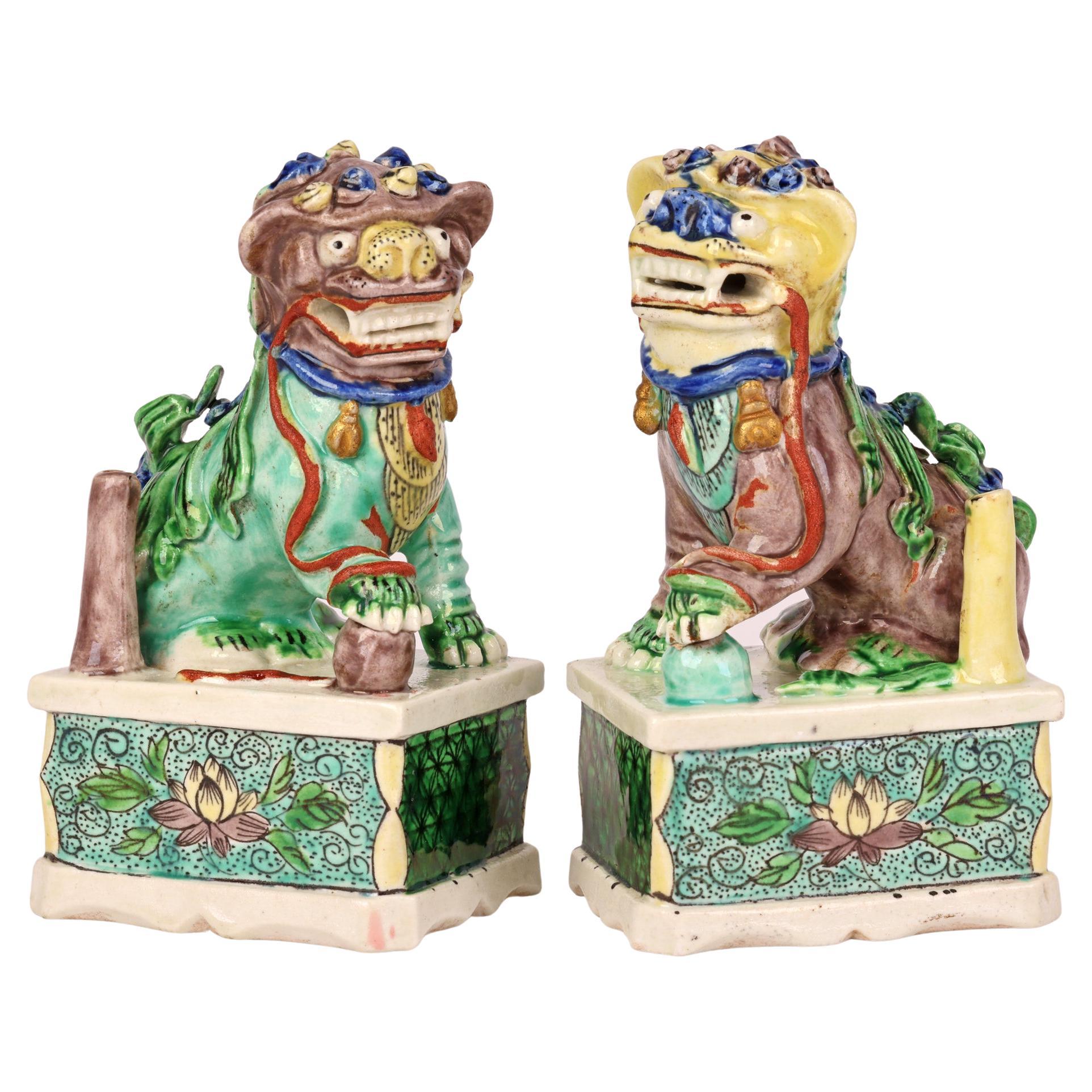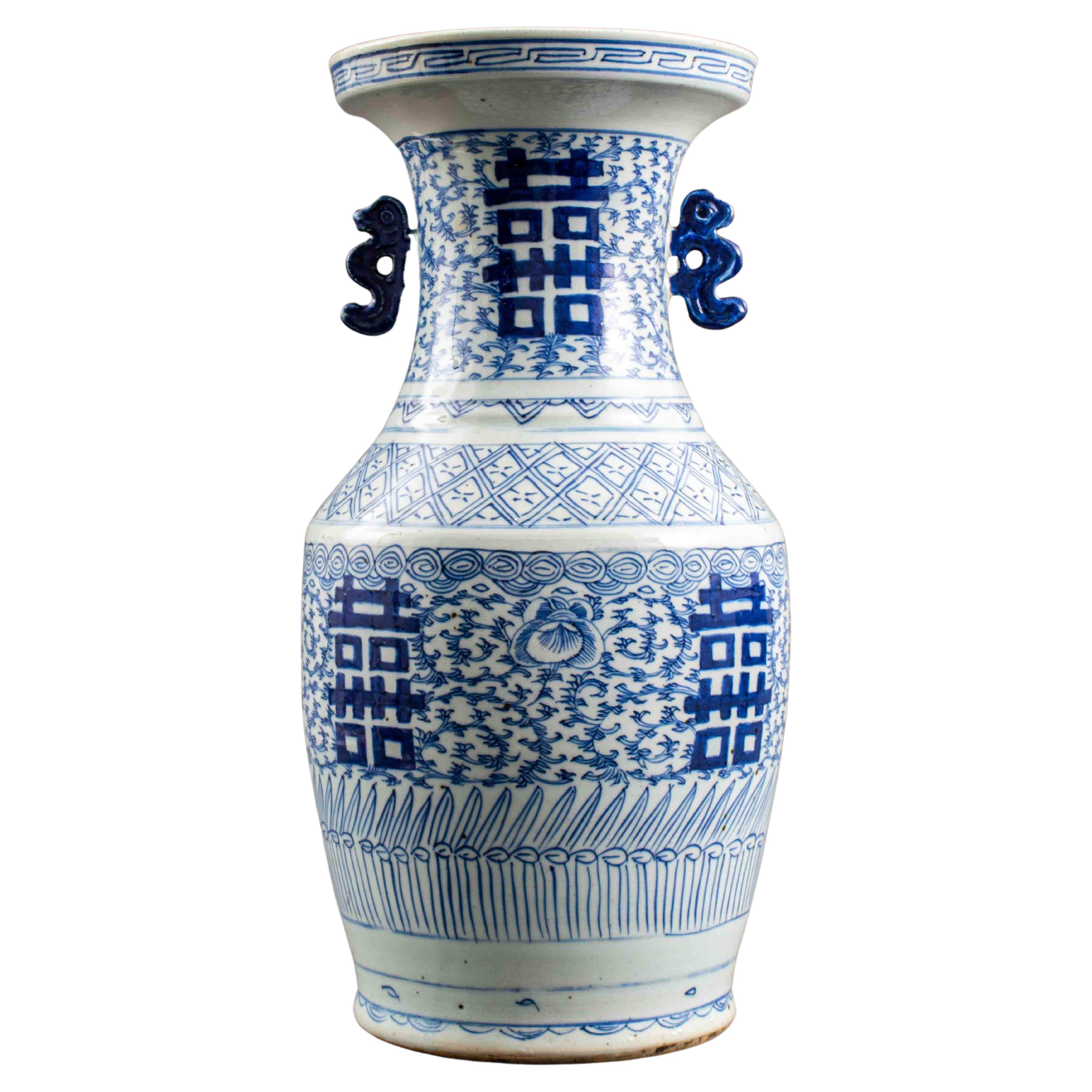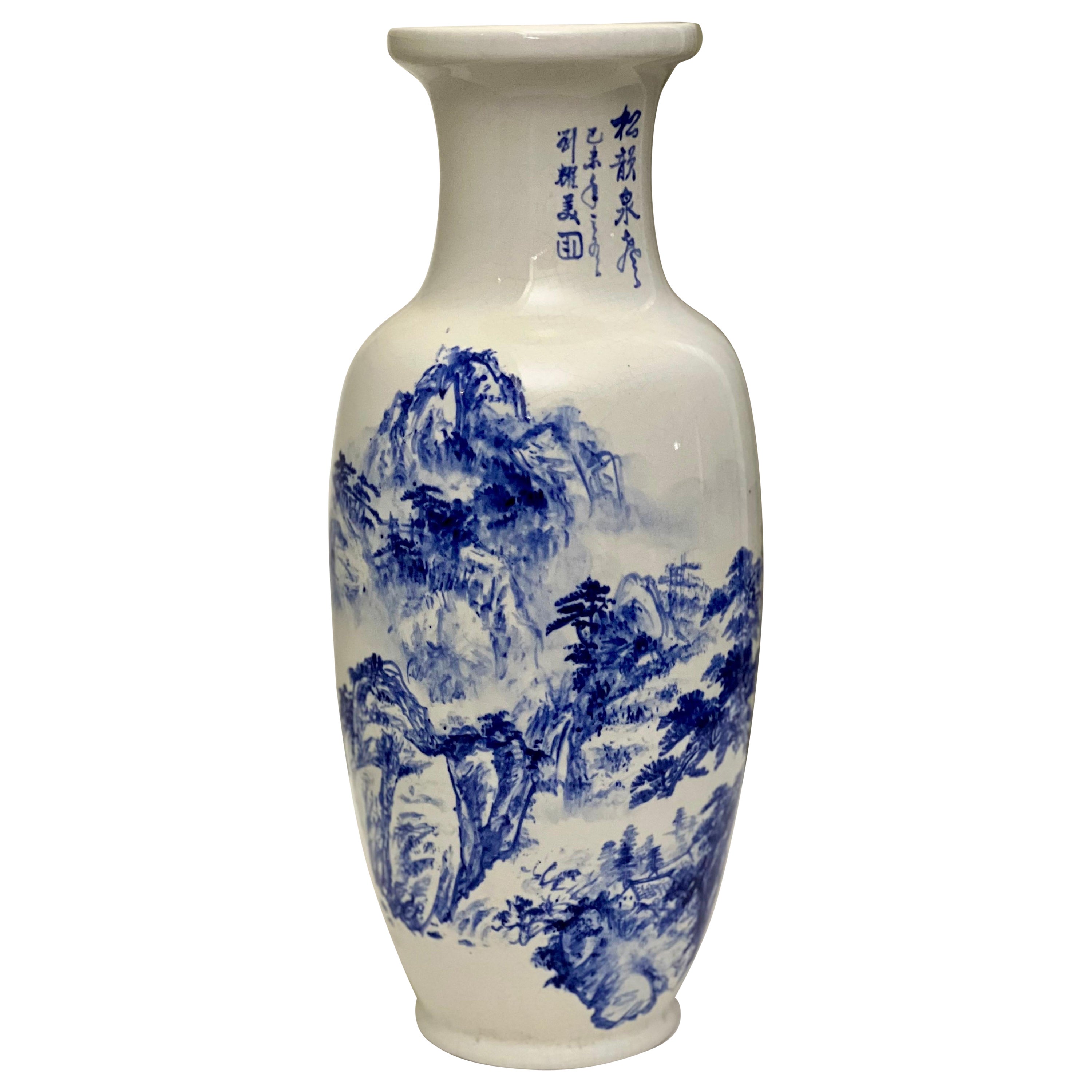Items Similar to Chinese Blue and White Porcelain Vase from Modern Official Kiln
Want more images or videos?
Request additional images or videos from the seller
1 of 18
Chinese Blue and White Porcelain Vase from Modern Official Kiln
About the Item
Dubbed as production of the "Chinese Modern Official Kiln", a small group of porcelains of the highest standard were produced in Jingdezhen from 1962-1967, The production was aimed as a revival of the Chinese porcelain after the foundation of the Republic in 1949 in order to serve the purpose of decorating the meeting halls for the newly renewed diplomatic relations around the globe. The best available materials and artists, including the painters and potters, were employed to achieve a high quality that rivaled the pieces produced during the pinnacle years in the porcelain production in the previous Qing dynasty. Due to the breakout of the Cultural Revolution, most of the pieces failed to be used as intended. Most if not all signatures, such as found on this vase, were added later as a hallmark to distinguish them. "Zhong Nai Hai Huai Ren Tang Treasures Porcelain Research Bureau year of 1962". Zhong Nai Hai is the residential and working compound for Chinese political elites in Beijing and Huai Ren Hall being an important meeting hall.
The pieces from "Modern Official Kiln" ubiquitously showcase perfectly balanced forms with precision in symmetry. The use of very high quality Gaolin clay resulted in a semi translucent body, often quite thinly potted. The superbly underglaze paint were sandwiched between a pre-applied glaze and then an overglaze, and the elaborate designs were drawn by master painters. Often, there is a hidden red Chinese National Emblem on the interior wall. These features were all well reflected in this piece. The decoration of the blue paint on the vase is of a classic regal composition and the cobalt blue is of a vivid radiating color. Blooming peonies, an old laurel tree with blossom and scholar rocks provide the background and anchor for a pair of peasants. One raises its head to crow while the other one looks down. These motifs are commonly found in classic Chinese scroll paintings, a genre called "Flower and Bird Painting". On the back of the vase, there are Chairman Mao's head portrait watermarked in the glaze as well as a cursive poem with a collection number as shown.
For a pair of blue and white vase of the same production, see sale by Singapore International Auction PTE ltd on July 21st, 2019 lot 2014.
For a pair of blue and white urns with nearly identical design, see sale by Beijing ZhongPai International Auction on Jan 20th, 2007 lot 230 (last image).
- Dimensions:Height: 18.25 in (46.36 cm)Diameter: 7.25 in (18.42 cm)
- Style:Modern (Of the Period)
- Materials and Techniques:
- Place of Origin:
- Period:
- Date of Manufacture:1962
- Condition:Wear consistent with age and use. There is a long vertical crackle on the back along the watermark Mao's portrait and poem as shown. A couple of nicks on the base rim as shown.
- Seller Location:Atlanta, GA
- Reference Number:1stDibs: LU945023588482
About the Seller
5.0
Platinum Seller
These expertly vetted sellers are 1stDibs' most experienced sellers and are rated highest by our customers.
Established in 2006
1stDibs seller since 2010
478 sales on 1stDibs
Typical response time: <1 hour
- ShippingRetrieving quote...Ships From: Atlanta, GA
- Return PolicyA return for this item may be initiated within 2 days of delivery.
More From This SellerView All
- Japanese Kyoto Ware Vase Attributed to NinseiLocated in Atlanta, GAAn elegant vase made in Kyoto, Japan, circa 1920s. With a graceful elongated Mei-Ping form, it was likely used as a flower holder during the tea ceremony. The stoneware body has an incised and raised design of Irises in an over glazed indigo blue, an subject matter and composition found in the contemporary paintings and screens, cherished by the literati of the Kyoto society. The vase has a white glazed background sprinkled with dust for a rustic effect. The blue glaze displays some burst of bubbles upon close inspection, suggesting its age. Under the base, there is a small impressed mark of Ninsei (born Nonomura Seisuke) a famous potter from the 17th century, who was considered the founder the Kyoto ware...Category
Vintage 1920s Japanese Japonisme Ceramics
MaterialsCeramic
- Set of Ki-Seto Ceramic Altar Pieces from Korean Empire PeriodLocated in Atlanta, GAA set of three ki-seto (yellow-seto) ceramic altar pieces made in the period of Korean Empire (1897-1910), a short independent period after Joseon dynasty before the invasion and occupation by Japan. The set consists of a candle holder with a metal pricket, an incense burner with lid and a vase. Traditionally, there were used during ritual ceremony as the accoutrement for a small altar table...Category
Early 20th Century Korean Other Ceramics
MaterialsCeramic
- Korean White Ceramic Stem Dish Joseon DynastyLocated in Atlanta, GAA ceramic dish with high cylindrical foot in white glaze from Korea, circa 19th century Joseon Dynasty. By shape, this piece is most likely a ceremonial vessel that was used to make offerings on the altar. Although without inscription, we can't rule out that it could be a household item for occasions that were less formal. Such as a private shrine in the household. During Joseon dynasty, the social morals were largely centered on the principles of Confucianism that originated from China. Many ritual ceramic wares were produced for rituals and worships on all level of the society. The ware were often modeled after the archaic bronze ware that elevated them from the aesthetic of daily use pieces. High foot dish like this were made in both round and square shape to suite different use but they were all distinguished with the inscription for their exclusive ceremonial purpose. Of elegant form and harmonious proportion, this stem dish...Category
Antique 19th Century Korean Archaistic Ceramics
MaterialsCeramic
- Japanese Glazed Ceramic and Silver Koro Incense Burner Makuzu KozanBy Makuzu KozanLocated in Atlanta, GAA tri-pod ceramic incense burner (koro) by Japanese Imperial potter Makuzu Kozan (1842-1916) circa late Meiji to the start of Taisho period (1890-1910s). A fine example of the artist's work belonging to the late part of his underglaze paint phase (started around 1887 until his death), the surface of the koro was painted in beautiful shades of blue to depict a continuous landscape not unlike a traditional ink and watercolor hand scroll. The rise and fall mountains recede and fade into the horizon and are dotted with groves of pines. The sky is painted with a beautiful subtle shade of pink, suggesting a time of sunrise or sunset. The koro is fitted with an ensuite reticulated sterling silver hoya (incense cover), pierced with swirling cloud and marked with "pure silver' in Kanji. The base is signed in underglaze blue "Makuzu Kozan Sei" within a double ring. The piece is beautifully potted in form and the decoration was done with expertise using the novel technique developed by Kozan called Fuki-e (the blow painting), in order to achieve the striking landscape known as "Mountain and Water" with sense of dimensions and gradient, the poetic effects normally conveyed only by sumi ink staining on paper. The piece comes with an unsigned tomobako (wood storage box) of a recent age. Also known as Miyagawa Kozan (1842–1916), Makuzu Kozan was one of the most established and collected ceramist from Meiji Period. Born as Miyagawa Toranosuke, Kozan established his pottery studio in Yokohama around 1870s and later became one of the appointed artists to the Japanese Imperial household. His work was exhibited in many international fairs that the Meiji government participated at the turn of the century and won many grand prizes. Being one of the most creative ceramists, Kozan started experimenting with new chemical colors from the West in the format of his porcelain glaze around 1880s. New colors allowed him to create underglaze designs that appeared bright, smooth and glossy. He even invented his own receipt of cobalt blue to achieve a much brighter yet softer shade, as evident on this vase. To create landscape that is realistic and dimensional, more common in the western paintings, he was inspired by the native Japanese ink painting technique developed around 1900 by Yokoyama...Category
Antique Early 1900s Japanese Japonisme Ceramics
MaterialsSilver
- Japanese Shino Ware Chawan Tea Bowl by Toyoda KatsuhikoLocated in Atlanta, GAA modern Japanese ceramic tea bowl (chawan) made by potter Toyoda Katsuhiko (1945-). The bowl was potted in clog form with a short ring foot in the tradition of Shino ware...Category
20th Century Japanese Edo Ceramics
MaterialsCeramic
- Rare Korean Water Dropper in Doughnut Form Joseon DynastyLocated in Atlanta, GAA Korean blue and white porcelain water dropper in a rare hallowed out doughnut shape from Joseon Dynasty circa 1800s. The octagonal water dropper is covered in a brilliant white gla...Category
Antique Late 18th Century Korean Other Ceramics
MaterialsCeramic
You May Also Like
- Chinese Guangxu Coral Glazed Porcelain Brush Washer/Ink WellLocated in Bishop's Stortford, HertfordshireA fine antique Chinese coral glazed porcelain brush washer or inkwell decorated with a bamboo sprig and dating from the early Guangxu reign 1875-...Category
Antique 1870s Chinese Qing Ceramics
MaterialsPorcelain
- Chinese Graduated Pair Turquoise Glazed Porcelain Mounted Foo DogsLocated in Bishop's Stortford, HertfordshireA very fine and attractive pair of graduated Chinese turquoise glazed dogs of foo figures dating from the first half of the 20th century. The hollow biscui...Category
20th Century Chinese Mid-Century Modern Ceramics
MaterialsPorcelain
- Chinese Pair Kangxi Porcelain Famille Verte Buddhist Lion Joss Stick HoldersLocated in Bishop's Stortford, HertfordshireA very fine pair antique Chinese Kangxi porcelain famille verte Buddhist Lion joss stick holders dating between 1662 and 1722. The dogs sit raised on...Category
Antique 17th Century Chinese Qing Ceramics
MaterialsPorcelain
- Chinese Kangxi Very Rare Blanc De Chine Porcelain Cockerel, 1662-1722Located in Bishop's Stortford, HertfordshireAn extremely rare and finely made Chinese Kangxi porcelain blanc de chine figure of a cockerel. The cockerel stands on a shaped base with good feather detailing and stands crowing wi...Category
Antique Late 17th Century Chinese Qing Ceramics
MaterialsPorcelain
- Chinese Blue and White Porcelain VaseLocated in New York, NYChinese blue and white porcelain vase hand-painted with double happiness symbols upon a scrolling foliate ground, with two figural animal...Category
Antique 15th Century and Earlier Ceramics
MaterialsPorcelain
- Chinese Qing Pair Jun-Ware Liver Red Glazed Foo DogsLocated in Bishop's Stortford, HertfordshireA rare and attractive pair Chinese Qing Jun-ware Foo dogs decorated in liver red glazes and dating from around 1850. The porcelain dogs are heavily made and stand raised on rectangul...Category
Antique 1850s Chinese Qing Ceramics
MaterialsPorcelain
Recently Viewed
View AllMore Ways To Browse
Modern White Ceramics
Pair Of Blue And White
Kiln Used
Hall Ceramics Vintage
Used Kiln Furniture
Kiln Used For
Blue And White Porcelain Vase
Red And White China
Vintage Blue And White Porcelain
Ceramics Sale
Used Ceramics Kilns
Chinese Blue Pieces
Chinese Blue White Pair
Elite Modern
Blue White China Pair
Pair Blue Chinese Porcelain
Blue And White Chinese Pair
Chinese Scrolls
